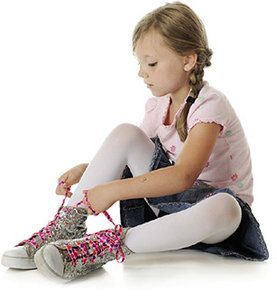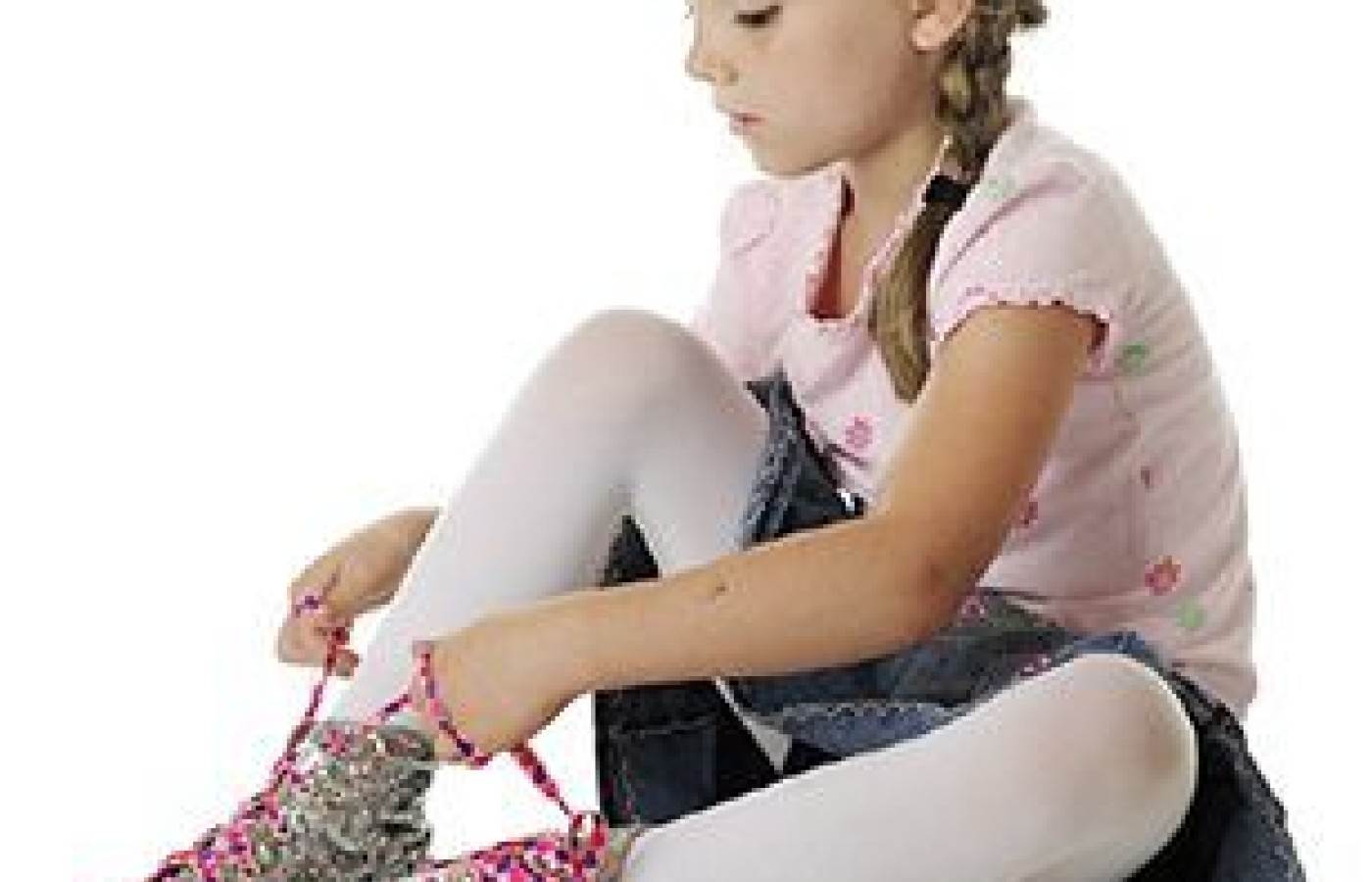You became a chiropractor to serve people, not an insurance company. You deserve to run a business that aligns with your values, supports your family and lights you up. Cash-based care isn’t just a pricing model – it’s a philosophy rooted in freedom, trust and respect for your patients and for yourself. Here's why - and how - to do it.
Pediatric Footwear: Function Over Fashion
As practitioners, it is not uncommon for parents to bring us their children to treat or ask us questions related to the pediatric population. Children's feet tend to be a perplexing region for parents and practitioners alike. What footwear is safe and healthy? When is it OK (or preferred) for kids to go barefoot? What is normal / abnormal in the rapidly growing pediatric foot?
As both a health care provider and a mother, these have been questions in my mind as well. There are so many shoe choices in variety of price ranges with adorable patterns; how can you ensure that the footwear choices for your children are based on function, not fashion?
Unique Features of the Pediatric Lower Extremity
When looking at the pediatric lower extremity, one of the most common characteristics seen early on is the shortened or wide stance; knees tend to appear genu varum or bowlegged. This can be seen up to the age of 2 years old and is considered to be normal when it is symmetrical and painless. Children often begin cruising and walking during this time as well, during which gait tends to be unsteady and accompanies a wide-base stance.
As gait is fine tuned at approximately 3 years of age, the child (and their feet) continue growing.1-2 Foot growth tends to be consistent regardless of the age in that it grows approx. 1.5 inches in size. It has been noted that foot growth becomes fairly rapid between the ages of 7 and 12 years old.1-2

This is incredibly important to keep in mind because as children are growing, it is sometimes easy to overlook the need for a new pair of shoes, especially if the shoes are in good condition.
Medial arches develop around the age of 5; this can be a cause of concern for parents of younger children when they are unable to observe an arch.3 Approximately 44 percent of preschool children experience flexible, painless flat foot.4 Infants tend to look as though they have flat feet due to the subcutaneous fat pad and joint laxity. Pes planus tends to be hereditary and is more common in children who wore shoes when they were young; closed-toe shoes tend to have greater impact on growth of the young foot.5
According to the American Academy of Pediatrics, "barefoot is best" unless the environment warrants it, as this keeps the foot flexible, strong and mobile, and allows for optimal stimulation of the foot by the ground.6
When weight bearing, this group has a flattened medial arch and the calcaneus may exhibit valgus stress. Medial sole wear is apparent in 1-2 weeks on new shoes, and callouses may develop.3
Assessing the Pediatric Foot: Key Considerations
As we identify where the child is in their developmental and psychomotor journey, we should consider the pediatric foot assessment as a threefold process: 1) inspection / palpation, 2) foot / ankle range of motion and 3) gait observation.
- During inspection / palpation, identify any areas that are potentially painful, especially over the medial arch, while palpating from the toes to the ankle. While doing this, make sure to watch the child's face, as they may not verbalize that they are feeling pain. In addition, inspect for sores, pressure spots, swelling and redness.
- Range of motion of the foot and ankle should be performed, with specific attention to inversion / eversion and plantar / dorsiflexion; this could be affected by a shortened or tightened Achilles tendon.
- The gait pattern of the child will provide insight into whether there is pain associated with weight bearing and if they maintain the medial arch. In addition, make note if they pronate, supinate, or internally or externally rotate when they walk.
If the child is cooperative and a postural analysis can be performed, it should be considered since this will provide the clinician with feedback on the lower extremities and pelvis.
Educate Parents: How to Choose the Right Footwear
Since there are so many choices of footwear for children of all ages, it is important to first consider age and developmental stage. This will allow the parent to determine the intended function of the shoe. As parents shop for footwear, they should always keep in mind that barefoot is best unless the terrain prevents it.6
The following suggestions have been developed based on recommendations from the American Academy of Pediatrics and the American Podiatric Medical Association:6-7
Pre-Walkers / Toddlers / School-Aged Children
For pre-walkers, encourage parents to stay away from the temptation of those cute, fashionable shoes; opt for booties and socks instead. However, if they want to use shoes, they should be flexible and wide.
As the child grows and becomes a walker, toddler shoes should be lightweight with a wide toe box. In addition, the sole should be smooth and synthetic materials should be avoided. Barefoot is best (whenever possible) to allow the foot to remain flexible, strong and mobile.
School-aged children should wear socks and shoes that are well-ventilated and flexible, with a stiff heel, toe flexibility and rigid middle.
Tweens and Teens
Tweens and teens can be the most complex group when it comes to footwear choices. Depending on their activity levels and social interests, this can have significant impact on the function vs. fashion debate.
Children of this age should wear shoes that are flexible at the toe and heel, as well as socks. Parents also should be educated on heel heights, in that they should not be greater than 2 inches. The greater the heel height, the greater the impact on the lower extremity and pelvis.
The Athlete
Always consider the terrain and the sport. The most common complaint for the athlete is heel pain. It is best for children to be fitted at a sports store for athletic shoes. For children older than age 5, custom orthotics can help them stay injury-free on the field (more below).
Socks
There are many different types of socks on the market, making it difficult to choose the "right" one. Natural, synthetic blends help to keep moisture down, and a sock with small seams assists in decreasing blisters or skin irritations.
Orthotics
Orthotics can be a smart option for children with a fully formed medial arch who are exhibiting signs of pes planus. Prior to medial arch formation, at approximately age 5, orthotics are typically not recommended unless there is an associated pathological condition.
Generally speaking, the younger the child, the smaller / less correction is recommended. Corrections can be "built up" as needed as the child grows older and gets new shoes.
All Children
Regardless of the child's age, when shopping make sure to measure both feet each time. Growth can happen quickly and the parent may be unaware that the child is wearing small footwear, which is quite dangerous for the growing foot. Shopping in the later afternoon is also a good idea, as feet tend to swell as the day goes on. Shoes should be comfortable immediately and not require a "break-in" period.
Your Role as the Provider
Educate parents and your child patients on the best footwear for pedal health! It is incredibly important that parents know what to look for in footwear and that it is perfectly fine to allow children to be barefoot in areas where the terrain does not require protection. As providers, it is also important to identify when a pediatric patient may have a pathological pes planus that warrants further evaluation.
References
- Gould N, Moreland M, Trevino S, et al. Foot growth in children age one to five years. Foot Ankle, 1990;10(4):211-3.
- Gould N, Moreland M, Alvarez R, et al. Development of the child's arch. Foot Ankle, 1989;(5):241-5.
- Rose R. Flat feet in children: when should they be treated? Internet J Orthopedic Surg, 2006;6(1).
- Pfeiffer M, Kotz R, Ledl T, et al. Prevalence of flat foot in preschool-aged children. Pediatrics, 2006 Aug;118(2):634-9.
- Rao UB, Joseph B. The influence of footwear on the prevalence of flat foot. A survey of 2030 children. J Bone and Joint Surg (U.K.), 1992;74(4):525-527.
- American Academy of Pediatrics: www.aap.org/en-us/Pages/Default.aspx.
- American Podiatric Medical Association: www.apma.org/index.cfm.



